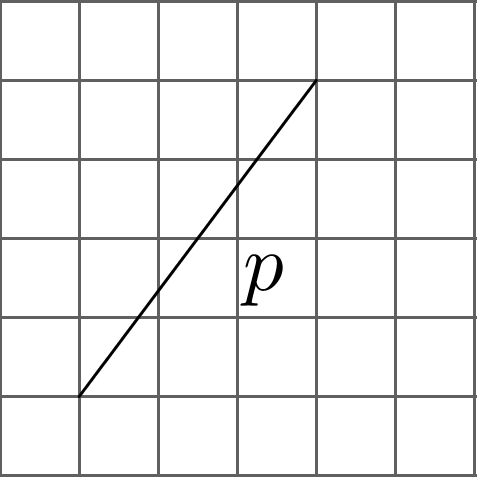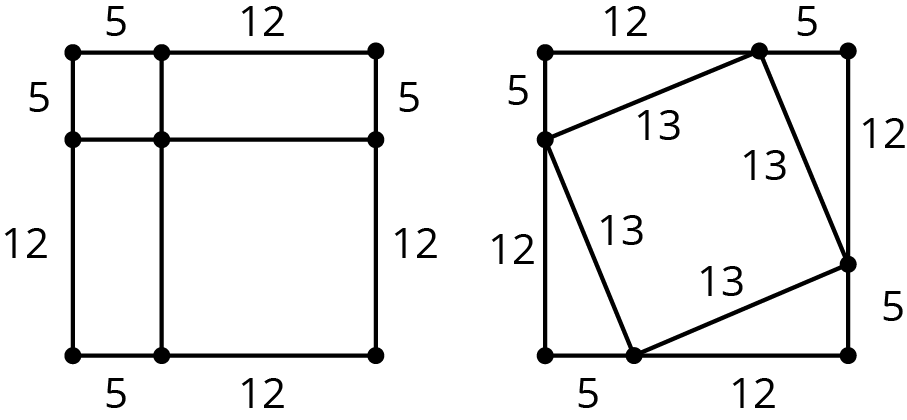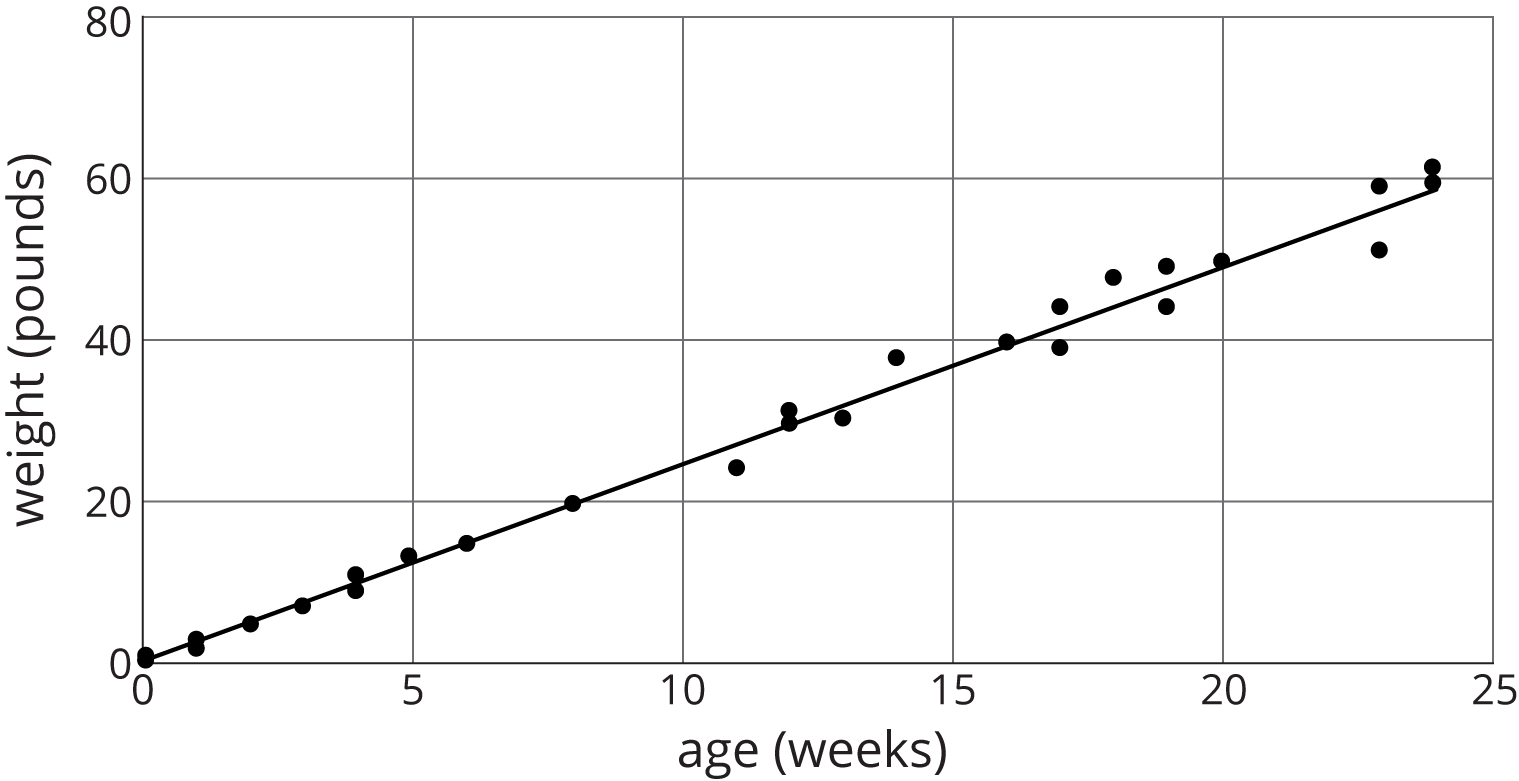Lesson 6
A Proof of the Pythagorean Theorem
Problem 1
- Find the lengths of the unlabeled sides.


- One segment is \(n\) units long and the other is \(p\) units long. Find the value of \(n\) and \(p\). (Each small grid square is 1 square unit.)


Solution
For access, consult one of our IM Certified Partners.
Problem 2
Use the areas of the two identical squares to explain why \(5^2+12^2=13^2\) without doing any calculations.

Solution
For access, consult one of our IM Certified Partners.
Problem 3
Find the exact value of each variable that represents a side length in a right triangle.

Solution
For access, consult one of our IM Certified Partners.
Problem 4
Write each expression as a single power of 10.
- \(10^5 \boldcdot 10^0\)
- \(\frac{10^9}{10^0}\)
Solution
For access, consult one of our IM Certified Partners.
(From Unit 7, Lesson 4.)Problem 5
Here is a scatter plot of weight vs. age for different Dobermans. The model, represented by \(y = 2.45x + 1.22\), is graphed with the scatter plot. Here, \(x\) represents age in weeks, and \(y\) represents weight in pounds.

- What does the slope mean in this situation?
- Based on this model, how heavy would you expect a newborn Doberman to be?
Solution
For access, consult one of our IM Certified Partners.
(From Unit 5, Lesson 21.)